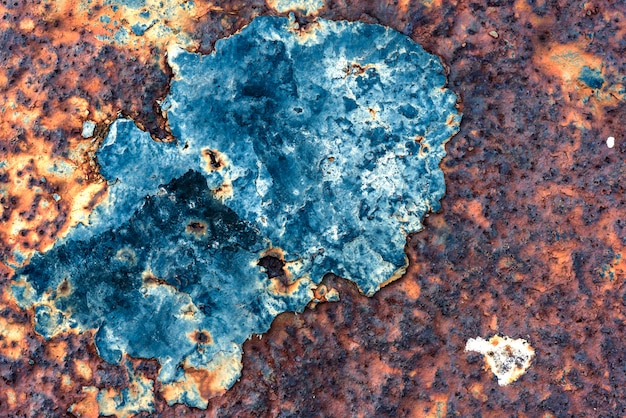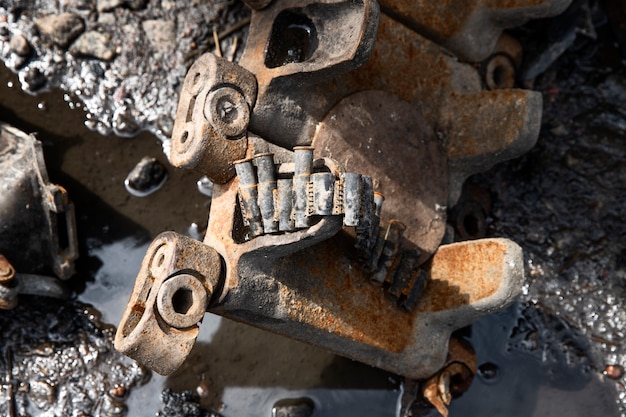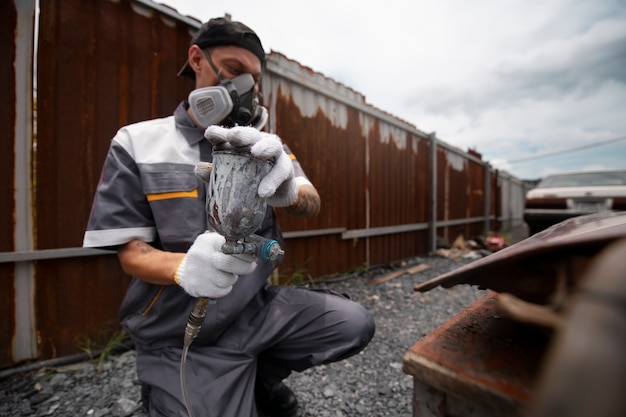The Ultimate Guide To Corrosion Inhibitors: Shielding Your Assets From Decay
Corrosion poses a significant threat to various industries, causing substantial economic losses and compromising the integrity of critical assets. In the battle against decay, corrosion inhibitors emerge as indispensable allies. These compounds play a pivotal role in safeguarding infrastructure, machinery, and equipment, ensuring longevity and operational efficiency. In this comprehensive guide, we delve into the world of corrosion inhibitors, exploring their types, mechanisms, applications, and the crucial role they play in preserving assets.
Understanding Corrosion
Corrosion is a natural process that involves the deterioration of metals due to chemical reactions with the environment. The most common form of corrosion is rusting, where iron or steel reacts with oxygen and moisture to form iron oxide. This process weakens the metal, leading to structural failures and reduced functionality. The economic impact of corrosion is staggering, costing industries billions of dollars annually in maintenance, repairs, and replacements.
The Need for Corrosion Inhibitors
To combat the pervasive threat of corrosion, industries employ corrosion inhibitors. These chemical compounds act as protective shields, forming a barrier between the metal surface and corrosive elements. The application of corrosion inhibitors can significantly extend the lifespan of assets, reduce maintenance costs, and enhance operational reliability. The selection of the appropriate corrosion inhibitor depends on factors such as the type of metal, environmental conditions, and the specific industry requirements.
Types of Corrosion Inhibitors
- Anodic Inhibitors: Anodic inhibitors work by forming a protective film on the metal surface, preventing the oxidation of metal ions. Common anodic inhibitors include chromates, phosphates, and molybdates. These inhibitors are effective in environments where oxygen availability is limited.
- Cathodic Inhibitors: Cathodic inhibitors operate by slowing down the reduction reactions at the cathode. Compounds like zinc and aluminum are commonly used as cathodic inhibitors, sacrificing themselves to protect the metal they shield.
- Mixed Inhibitors: Mixed inhibitors combine both anodic and cathodic inhibition mechanisms, providing comprehensive protection. These inhibitors are versatile and suitable for a wide range of applications.
- Volatile Corrosion Inhibitors (VCIs): VCIs release vapor-phase corrosion inhibitors into the atmosphere, forming a protective layer on metal surfaces. They are particularly useful for protecting enclosed spaces and hard-to-reach areas.

Mechanisms of Corrosion Inhibition
Understanding the mechanisms behind corrosion inhibition is crucial for selecting the right inhibitor for a specific application.
- Passivation: Corrosion inhibitors can induce passivation, where a thin, protective oxide layer forms on the metal surface. This layer acts as a barrier, preventing further corrosion.
- Adsorption: Inhibitors adsorb onto the metal surface, creating a protective film. This film reduces the interaction between the metal and corrosive elements, inhibiting the corrosion process.
- Ion Exchange: Some inhibitors operate through ion exchange mechanisms, replacing metal ions on the surface with less reactive ions, thereby reducing the corrosion rate.
Applications of Corrosion Inhibitors
Oil and Gas Industry:
In the harsh environments of oil and gas production, corrosion inhibitors play a vital role in protecting pipelines, offshore platforms, and equipment from corrosive elements present in the fluids.
Aerospace Industry:
Aircraft components face extreme conditions, including high altitudes, temperature variations, and exposure to environmental contaminants. Corrosion inhibitors are used to preserve the structural integrity of aircraft components.
Automotive Sector:
In the automotive industry, corrosion inhibitors are applied to vehicle undercarriages and structural components to prevent rusting caused by exposure to road salt, moisture, and other environmental factors.
Water Treatment:
Corrosion inhibitors are essential in water treatment systems, preventing the degradation of pipes, valves, and other infrastructure components. They help maintain water quality and extend the lifespan of equipment.

Factors Influencing Corrosion Inhibitor Selection
- The selection of corrosion inhibitor is influenced by the particular environmental factors, including humidity, temperature, and the existence of corrosive substances.
- Different metals have different levels of vulnerability to corrosion. The specific metal being used determines the choice of a suitable inhibitor.
- The effectiveness of corrosion inhibitors in specific situations can be influenced by the way they are applied, such as through spraying, immersing, or using vapor phase.
- Cost is a key factor when choosing corrosion inhibitors, as it impacts their economic viability. It's important to find a balance between cost and effectiveness to establish a corrosion protection plan that is both practical and sustainable.
Challenges and Advances in Corrosion Inhibition
Traditional corrosion inhibitors, such as chromates, have raised environmental concerns due to their toxicity. The industry is actively exploring eco-friendly alternatives that provide effective corrosion protection without compromising environmental safety.
Advances in nanotechnology have led to the development of nanocomposite inhibitors with enhanced protective properties. These inhibitors operate at the molecular level, offering improved efficiency and durability.
The integration of smart materials and sensors into corrosion inhibitors allows for real-time monitoring of corrosion conditions. This enables proactive maintenance and targeted application of inhibitors where needed.
Best Practices for Corrosion Prevention
- Regular Inspections: Routine inspections of assets help identify corrosion issues early, allowing for timely intervention and application of corrosion inhibitors.
- Proper Surface Preparation: Ensuring that metal surfaces are clean and properly prepared before applying inhibitors enhances the effectiveness of corrosion protection.
- Correct Application Method: The choice of application method, whether through spraying, coating, or immersion, should align with the specific requirements of the asset and environmental conditions.
- Compatibility Testing: Before widespread application, it is crucial to conduct compatibility testing to ensure that the chosen corrosion inhibitor is suitable for the metal and environmental conditions.
Corrosion inhibitors stand as powerful guardians against the relentless forces of decay that threaten our infrastructure and assets. The ultimate guide presented here provides a comprehensive overview of corrosion inhibitors, from their types and mechanisms to applications and advances in the field.
As industries continue to evolve, so too will the quest for more effective, environmentally friendly, and technologically advanced corrosion inhibitors to ensure the longevity and reliability of critical assets. Armed with this knowledge, industries can proactively shield their assets from corrosion, securing a future where decay takes a back seat to resilience and sustainability.

